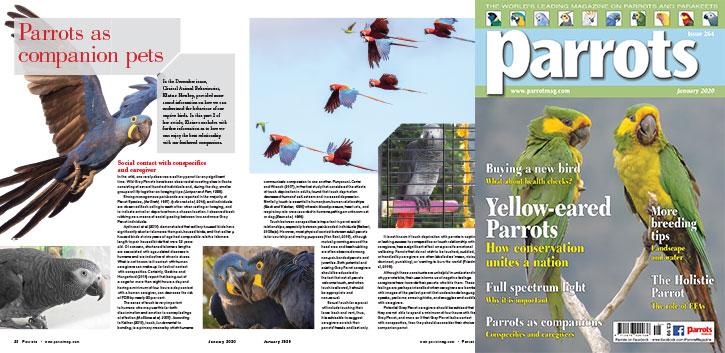
By Elaine Henley
In the wild, one rarely observes a solitary parrot for any significant time. Wild Grey Parrots have been observed at roosting sites in flocks consisting of several hundred individuals and, during the day, smaller groups will fly together on foraging trips (Juniper and Parr, 1998).
Strong monogamous pair-bonds are reported in the majority of Parrot Species, (de Grahl, 1987; Aydinonat et al, 2014), and individuals are observed flock calling to each other when resting or foraging, and to indicate arrival or departure from a chosen location. I observed beak rubbing as a means of social greeting between two and more Grey Parrot individuals.
Aydinonat et al (2014) demonstrated that solitary housed birds have significantly shorter telomeres than pair-housed birds, and that solitary-housed birds at nine years of age had comparable relative telomere length to pair housed birds that were 32 years old. Of concern, shortened telomere lengths are associated with age-related diseases in humans and are indicative of chronic stress. What is not known is if contact with human caregivers can make up for lack of contact with conspecifics. Certainly, Gaskins and Hungerford (2014) report that being out of a cage for more than eight hours a day and having a minimum of four hours a day contact with a human caregiver, can decrease the risk of FDB by nearly 90 per cent.
